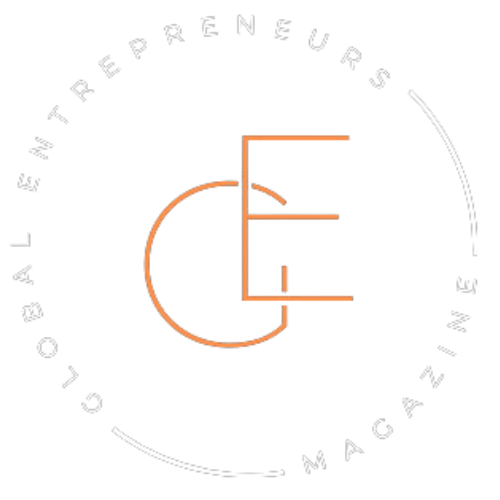It started with a missed call. Then another. Then a full week of unopened emails, unanswered messages, and a planner that hadn’t seen a pen in days.
Marissa had built her business from the ground up. What began as a side hustle on her couch had turned into a six-figure design agency. Clients were coming in faster than she could onboard them. She should’ve been thrilled. Instead, she was bone-tired. Wired at night, foggy in the morning. Meals skipped. Friends ignored. Everything that once brought joy was now a checkbox—and even those weren’t getting ticked.
Her body didn’t whisper. It screamed. A panic attack in the middle of a strategy call forced her to hit pause. Not on the business, at first—but on herself. She took a breath, then another. Then she asked the question most entrepreneurs avoid: What’s the point of scaling if I’m breaking myself in the process?
Marissa isn’t alone.
Behind many shiny business wins are stories like hers. Stories of women who pushed past their limits in the name of growth—until something snapped. But some of them found another way. A better way. One that allowed them to grow without losing their health, relationships, or sanity along the way.
This article is for those ready to hear those stories. Not the highlight reels, but the behind-the-scenes. The detours, the resets, the brave decisions to do business differently. And the lessons they’re sharing with anyone willing to listen.
The breaking point: what burnout looked like for them
It didn’t always show up as tears or breakdowns. Sometimes, it looked like Sarah staring blankly at her laptop for three hours, moving emails into folders she’d never open again. Sometimes, it looked like Priya waking up at 3 a.m. with chest tightness, convinced she forgot a client deadline—only to find it wasn’t due for another week. Other times, it was more subtle: forgetting lunch, flinching at calendar notifications, snapping at people she loved for asking simple questions like, “Are you okay?”
They were high-achievers. The kind who could juggle twenty tasks in one hand and map out next quarter’s strategy with the other. Burnout didn’t fit the brand. But it came anyway.
Sarah, a copywriter-turned-agency owner, had built her reputation on saying yes. Yes to rush jobs. Yes to underpriced retainers. Yes to anything that kept the pipeline full and the client happy. But behind the scenes, she was resenting the very business she’d once dreamed of. It wasn’t the work. It was the weight of being everything, everywhere, all the time.
Priya, a tech consultant who scaled fast thanks to referrals and big-name partnerships, hit a wall during her third product launch in a year. Her calendar was packed, her inbox overflowing, and her toddler had started asking if she “lived in her laptop.” That one landed hard.
None of them saw it coming. Burnout crept in slowly, disguised as hustle. The signs were there—fatigue that no weekend could fix, creativity drying up, feeling irritable for no clear reason. But when you’ve been taught that tiredness is a badge of honor, it’s easy to ignore the symptoms until your body—or your business—calls it out for you.
Every one of them had a breaking point. But that’s not where their story ends. It’s where things finally started to change.
Redefining success on their own terms
After her panic attack, Marissa didn’t go back to business as usual. She canceled three client calls, refunded a project she hadn’t started, and turned off Slack for a full week. It felt reckless. It also felt like survival.
Instead of chasing the next milestone, she asked what she actually wanted. The answer surprised her. She didn’t want a massive team. She didn’t want to be on every platform. She wanted quiet mornings. Deep, focused work. Clients who respected boundaries. That meant growing slower—but on her terms.
Sarah made a different call. She kept her agency, but restructured it completely. Instead of ten clients, she focused on three. She raised her prices, hired a project manager, and stopped checking email after 5 p.m. The extra white space in her calendar didn’t just ease her stress. It made her sharper. Ideas flowed again. Her writing felt alive again.
Priya chose something bolder. She pressed pause on consulting altogether and spent two months in Bali with her family. No client calls. No new offers. Just rest. When she came back, she didn’t pick up where she left off—she built something new. A product-based model that didn’t rely on her being on Zoom five hours a day.
None of these decisions fit the typical script of scaling. But none of these women cared anymore. They’d already followed the script—and it nearly broke them. Now, they were writing their own.
Building systems that support life, not just profit

The shift wasn’t just mindset—it was structural.
Marissa started with her calendar. Mornings were now non-negotiable: no calls, no meetings, just space to think, write, breathe. She batched her client work into two focused days a week and left the rest for strategy and rest. Her systems weren’t flashy. They were simple, and they worked. A shared dashboard for client updates. Auto-responders that bought her time. A weekly check-in template that replaced endless back-and-forth emails.
Sarah leaned into delegation. For years, she prided herself on being “hands-on.” But it turns out being the bottleneck isn’t a badge of honor—it’s a liability. She brought on a part-time ops manager to handle logistics and client timelines. Instead of being the fire extinguisher, she got to be the architect. The business kept running—even when she stepped away for two weeks to hike in the mountains without Wi-Fi.
Priya stopped chasing scale for the sake of it. Instead, she designed her business like a garden: small, intentional, seasonal. She planned her launches around school holidays. She cut out services that drained her and focused on evergreen products that sold while she slept. Profit didn’t disappear. It just came with breathing room.
None of them were chasing hustle anymore. They were building with care—structures that held them, instead of hollowing them out.
Community over competition
There was a time when Marissa thought she had to figure it all out on her own. Asking for help felt like admitting she wasn’t cut out for this. That changed the moment she joined a small mastermind of women who were just as ambitious, but not interested in burning out for a badge.
Their calls weren’t about follower counts or funnel hacks. They were about boundaries, bad days, and honest wins. When Marissa admitted she hadn’t opened her bookkeeping software in months, someone dropped the name of their virtual CFO. When Sarah shared that she was afraid raising her prices would scare people off, another woman replied, “Good. The wrong ones should be scared.”
For Priya, community came in voice notes. Every Monday, she and her closest business friend would send each other a five-minute check-in. No pressure to respond right away. Just space to be real. Sometimes they celebrated a good launch. Other times, they admitted they were tired of selling. Both mattered.
Something shifted when these women stopped measuring themselves against strangers on the internet and started leaning into real support. The slow path didn’t feel so lonely anymore. They weren’t chasing someone else’s definition of success. They were building something better—together.
What scaling actually looked like after the shift
Growth didn’t vanish. It just stopped demanding everything.
Marissa’s design agency still hit six figures—but this time, it didn’t come with sleep debt and Sunday dread. With fewer clients and tighter systems, she had room to think bigger. She launched a digital product, started mentoring younger designers, and finally took her first month-long break in years. Nothing fell apart.
Sarah’s revenue dipped for a quarter after her pivot. Then it climbed again—this time, steadier. She stopped chasing volume and focused on value. The clients who stuck around weren’t just paying more; they were easier to work with. They respected her time. She stopped proving herself and started enjoying her work again.
Priya’s new business model grew slowly, intentionally. The digital course she released now sells consistently without needing her to post five times a day or live-launch every quarter. She works fewer hours, earns more predictably, and has the freedom to spend real time with her family without checking in from the sidelines.
Scaling didn’t mean doing more. It meant doing different. And in that difference, they found a version of success that felt sustainable—not in theory, but in practice.
Permission to do it differently
If you’re tired, you’re not broken. You’re not behind. You’re probably just carrying more than your business was ever meant to hold.
The women in this piece didn’t burn it all down and start over. They made small, brave choices—again and again—to build something that could breathe alongside them. They said no to hustle-as-identity. They said yes to slower mornings, fewer clients, deeper work, longer walks, and longer vacations. And the world didn’t end. In fact, it opened up.
You don’t have to wait for a breakdown to rewrite your rules. You can choose to build a business that doesn’t cost you your health, your joy, or your presence. You can grow, rest, create, pause—and still be wildly successful.
You have permission to do it differently. And if no one’s told you that lately, let this be your sign.




